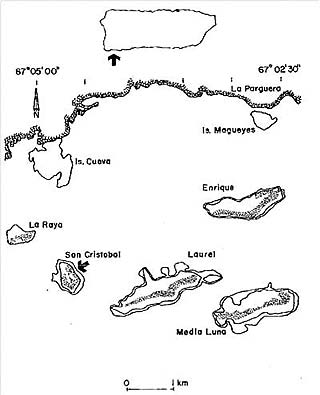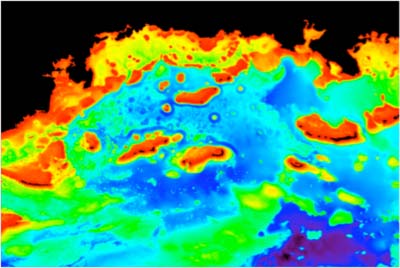
Fig. 1 Map of Bight of Parguera study site located on the SW corner of the island of Puerto Rico. Most of the work is occuring in the vicinity of Media Luna Reef.
Detecting climate change effects on coral reef calcification will depend on the ability to detect a consistent trend over many years that is superimposed on natural daily and seasonal variability that is much larger than the expected climate change signal. This trend should be consistent for reefs around the world if it is really due to global warming and ocean acidification and the change should have a sign and magnitude that is consistent with sensitivity studies performed in the lab under controlled conditions. These long term studies will take 10 years or more and will require the application of new technologies that will facilitate the collection of long-term data sets. A four-year study funded by NSF is allowing Langdon and Mike Degrandpre of the Uni. of Montana to test the performance of submersible pH and pCO2 sensors under natural coral reef conditions and see of the computed carbonate parameters compare well with total alkalinity and dissolved inorganic carbon based on discrete samples analyzed in the lab. If they do then these sensors could be used to collect much needed long-term data at many remote reefs around the world.

Fig. 2 False color image of Lidar data for the Bight of Parguera showing water depth in the study site. The black areas show where the reefs are emergent, red areas are approximately 2 m in depth and represent the areas with highest live.





